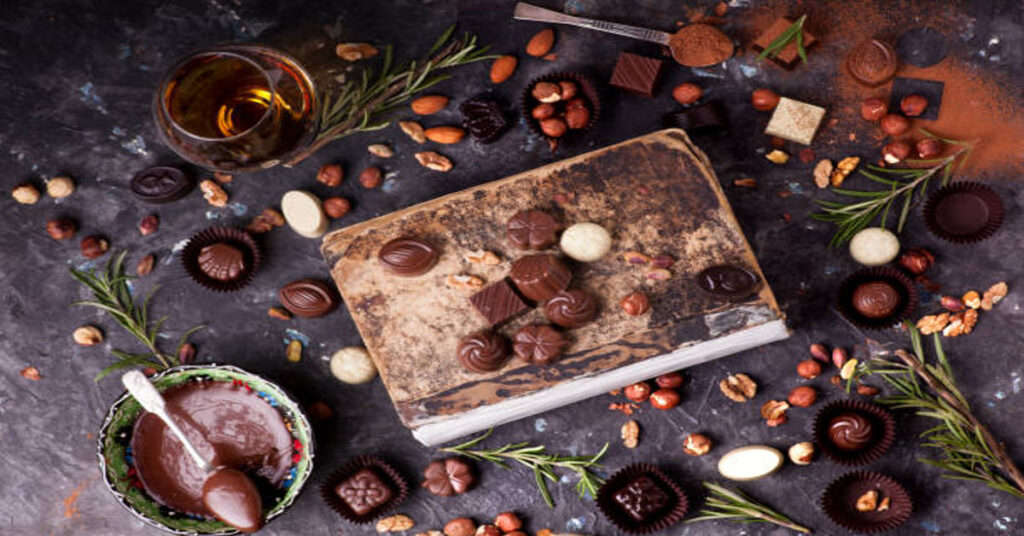The word “praline” immediately brings to mind images of rich, sweet confections that melt in the mouth—smooth, nutty, and irresistibly decadent. Yet behind this simple treat lies a deep and fascinating story of culinary evolution, regional adaptations, and artistry in candy-making. The praline, though often associated with luxury or indulgence, is much more than just a sugary dessert—it represents a blend of tradition, craftsmanship, and culture spanning centuries.
From its European aristocratic beginnings to its transformation in America’s Deep South, the praline has evolved into many delicious forms. Understanding praline involves exploring its origin, preparation methods, variations across countries, and the delicate science behind its texture and taste.
This article offers a detailed look at everything you need to know about pralines—from their composition and chemistry to their artistry, cultural significance, and practical techniques for creating them perfectly at home or professionally.
1. The Historical Origin of Praline
The origins of praline can be traced back to 17th-century France, where legend credits Chef Clement Lassagne, the personal cook of Marshal César de Choiseul, Comte du Plessis-Praslin, with creating the first praline. It is believed that Lassagne accidentally dropped almonds into boiling caramelized sugar. The resulting combination was surprisingly delicious, and the confection was soon named “praline” after the Count’s title, Praslin.
In its earliest form, the French praline was a simple yet elegant treat: whole almonds coated in caramelized sugar, sometimes with a hint of vanilla or spice. Over time, the concept spread across Europe, where confectioners adapted it using different nuts, techniques, and fillings.
Evolution Across Regions
| Region | Original Style | Unique Characteristics |
|---|---|---|
| France | Whole almonds in caramelized sugar. | Crunchy texture, subtle sweetness. |
| Belgium | Chocolate shells with soft nutty filling. | Known today as Belgian pralines. |
| Germany | Ground nuts mixed with sugar and cream. | Creamier, spreadable texture. |
| United States (Southern) | Brown sugar, butter, and pecans. | Soft, creamy, melt-in-mouth candy. |
The transformation from European pralines to the Southern American pecan praline represents one of the most significant culinary migrations in confectionery history.
2. Ingredients and Composition of Praline
The essence of praline lies in its simplicity of ingredients combined with precision in technique. Each ingredient plays a distinct role in shaping flavor, texture, and aroma.
Core Ingredients of Traditional Praline
| Ingredient | Function and Role in Flavor |
|---|---|
| Sugar | The base of the praline; caramelizes to create sweetness and color. |
| Nuts (Almonds, Pecans, Hazelnuts, etc.) | Add texture, aroma, and rich nutty flavor. |
| Butter | Adds smoothness, creaminess, and richness to the final candy. |
| Cream or Milk | Used in modern pralines for softness and smooth texture. |
| Flavorings (Vanilla, Cocoa, Coffee) | Enhance and diversify the flavor profile. |
Sugar Chemistry in Praline Making
Understanding sugar behavior is crucial to praline perfection. When sugar is heated, it undergoes caramelization, a chemical reaction that transforms plain sweetness into deep, complex flavor. At around 170°C (338°F), sucrose breaks down into glucose and fructose, forming compounds responsible for the rich golden-brown color and toasty flavor characteristic of pralines.
The balance between temperature, stirring, and timing determines whether a praline is crunchy and glassy or soft and fudgy.
3. The Science Behind Texture and Flavor
Texture defines the praline’s identity. A French praline’s crisp, glass-like shell differs entirely from the smooth creaminess of a Southern pecan praline or Belgian chocolate version. Achieving the perfect consistency is a combination of chemistry and craftsmanship.
Key Factors Affecting Texture
| Factor | Effect on Texture | Example |
|---|---|---|
| Temperature | High heat yields brittle texture; lower heat makes it creamy. | French vs. Southern praline. |
| Sugar-to-Cream Ratio | More cream = softer praline. | American praline uses cream or milk. |
| Cooling Rate | Slow cooling promotes smooth crystals; fast cooling creates crunch. | Belgian praline centers. |
| Nut Size and Roast | Finely chopped nuts blend smoother; roasted nuts deepen flavor. | Hazelnut or pecan pralines. |
Controlling these elements allows confectioners to design pralines that vary from delicate crunches to silky centers or creamy spreads.
4. Global Varieties of Praline
While pralines share a common origin, their transformation across continents led to diverse versions—each representing its own regional identity, taste, and culinary tradition.
A. French Praline
The original praline is made from almonds coated in caramelized sugar, sometimes ground into a paste called praliné. This paste forms the foundation of many classic French desserts such as Paris–Brest, opera cake, and praline buttercream.
- Texture: Crunchy or paste-like
- Flavor: Deep caramel with roasted almond tones
- Usage: Dessert fillings, toppings, or standalone sweets
B. Belgian Praline
Belgian pralines, invented in 1912 by Jean Neuhaus, are filled chocolates—often confused with the French original but entirely distinct. A thin chocolate shell encases fillings like hazelnut cream, ganache, nougatine, or caramel.
- Texture: Smooth, creamy interior with chocolate coating
- Flavor: Sweet and rich with various filling options
- Usage: Luxury chocolates, boxed confections
C. American (Southern) Praline
Introduced by French settlers in Louisiana, this praline evolved due to the availability of pecans instead of almonds and brown sugar instead of white. It became a soft, creamy candy associated with New Orleans and the Deep South.
- Texture: Soft, fudge-like consistency
- Flavor: Buttery caramel with pecan nuttiness
- Usage: Candies, holiday treats, dessert toppings
D. German and Swiss Praline
In Central Europe, pralines often take the form of nut-and-sugar pastes, combined with milk, butter, or chocolate. They are smoother and sometimes spreadable, forming the base for nut creams used in pastries.
- Texture: Velvety and creamy
- Flavor: Mildly nutty and milky
- Usage: Cake fillings, spreads, or chocolate centers
E. Modern Variations
Contemporary chefs and chocolatiers have reimagined pralines with ingredients such as pistachios, macadamias, or even sea salt and chili. Vegan pralines use plant-based milk and butter substitutes while maintaining classic flavor depth.
5. The Step-by-Step Process of Making Praline
Creating pralines requires both precision and patience. Below is a detailed guide suitable for home cooks and professionals alike.
Step 1: Preparing the Ingredients
Gather fresh nuts, granulated or brown sugar, butter, and cream. Use high-quality nuts for optimal aroma and texture.
Step 2: Roasting the Nuts
Roasting enhances the natural oils and intensifies flavor. Bake almonds or pecans at 180°C (350°F) for about 8–10 minutes until golden.
Step 3: Caramelizing the Sugar
In a heavy saucepan, melt sugar over medium heat. Avoid stirring excessively; swirl the pan gently to ensure even melting. When the sugar turns golden amber, it’s ready.
Step 4: Adding Butter and Cream (if applicable)
For softer pralines, stir in butter and cream carefully, as hot caramel can splatter. Stir until the mixture becomes smooth.
Step 5: Mixing in the Nuts
Add roasted nuts and coat them evenly in caramel. Work quickly, as caramel hardens fast.
Step 6: Cooling and Shaping
Pour the mixture onto a parchment-lined tray. For bite-sized pralines, spoon small portions. Allow them to cool and set naturally at room temperature.
Step 7: Storage
Once cooled, store pralines in airtight containers to preserve texture and freshness.
6. Nutritional Profile of Praline
While pralines are undeniably indulgent, understanding their nutritional content helps balance enjoyment with mindfulness.
| Nutrient (Per 100g) | Approximate Value |
|---|---|
| Calories | 480–520 kcal |
| Carbohydrates | 60–65 g |
| Sugars | 55–60 g |
| Fats | 25–30 g |
| Protein | 3–6 g |
| Sodium | 60–90 mg |
| Fiber | 2–3 g |
Health Insights:
- Nuts add healthy monounsaturated fats, vitamin E, and minerals.
- Sugar and butter, while delicious, make pralines a treat best enjoyed in moderation.
- Homemade versions can reduce refined sugar and include dark chocolate or natural sweeteners for a healthier twist.
7. Cultural and Culinary Significance of Praline
Pralines are more than just sweets—they are cultural artifacts reflecting regional identity and culinary artistry.
In France, pralines symbolize luxury and refinement. They often appear during festive seasons and high-end pâtisserie displays.
In Belgium, pralines are considered national treasures and are central to the country’s chocolate-making heritage. Iconic brands like Neuhaus and Godiva popularized Belgian pralines worldwide.
In the American South, particularly in Louisiana, pralines have become an emblem of Southern hospitality. The creamy pecan praline is a staple in festivals, weddings, and holidays, symbolizing warmth and generosity.
Praline-making also represents a generational tradition, with recipes handed down through families. The confection embodies comfort, nostalgia, and the artistry of turning humble ingredients into something exquisite.
8. The Art and Craft of Professional Praline Making
In the professional world, praline-making is both science and art. Master chocolatiers use temperatures, textures, and timing to create complex flavor layers and precise aesthetics.
Techniques in Professional Kitchens
- Tempering Chocolate: Essential for glossy, snap-perfect praline shells.
- Enrobing and Molding: Chocolate-coated pralines are created using molds for uniform shape.
- Filling Preparation: Nut pastes, ganache, caramel, and praline butter are emulsified to silky smoothness.
- Decoration: Gold leaf, cocoa dusting, or nut fragments enhance visual appeal.
Professional pralines often require specialized equipment such as thermometers, marble slabs, and tempering machines, ensuring precision at every stage.
9. Innovations in Modern Praline Craftsmanship
The praline continues to evolve through modern culinary innovation. Chefs experiment with global ingredients, molecular gastronomy, and fusion concepts, expanding the traditional definition of praline.
Examples of Modern Twists
| Innovation | Description |
|---|---|
| Salted Caramel Praline | Combines sweetness with a touch of sea salt. |
| Matcha Praline | Infuses Japanese green tea flavor for an earthy twist. |
| Vegan Coconut Praline | Uses coconut cream and plant-based butter. |
| Coffee Praline | Blends espresso with caramel for a rich aroma. |
| Spiced Praline | Features cinnamon, nutmeg, or chili for unique flavor depth. |
These innovations reflect the adaptability of praline as a canvas for creativity, merging tradition with contemporary culinary art.
10. Storage and Shelf Life
Proper storage is crucial to maintaining praline’s flavor, texture, and safety.
| Condition | Storage Method | Shelf Life |
|---|---|---|
| Room Temperature | Airtight container, cool dry place | 1–2 weeks |
| Refrigerated | Sealed container, away from moisture | 2–4 weeks |
| Frozen | Wrapped individually, airtight packaging | Up to 3 months |
Avoid exposing pralines to humidity or direct sunlight, as this can cause sugar bloom or melting. For chocolate-coated pralines, consistent temperature is key to preserving their glossy finish.
11. Praline in Baking and Desserts
Praline’s versatility extends beyond candy-making. It enhances countless desserts with its nutty sweetness and crunchy or creamy texture.
Common Uses in Pastry and Confectionery:
- Filling for cakes, éclairs, and tarts
- Topping for ice cream and mousses
- Ingredient in buttercreams or ganache
- Mixed into brittles or truffles
French chefs often incorporate praliné paste into luxurious desserts such as Paris–Brest, a choux pastry filled with praline cream, or praline mille-feuille, layered with delicate crunch and cream.
12. Homemade vs. Commercial Pralines
| Aspect | Homemade Praline | Commercial Praline |
|---|---|---|
| Flavor Quality | Fresh, customizable, and natural. | Consistent but may contain additives. |
| Texture Control | Can adjust hardness or creaminess. | Predetermined factory standard. |
| Cost | Economical for small batches. | Expensive for premium brands. |
| Shelf Life | Shorter due to lack of preservatives. | Longer shelf life with stabilizers. |
Homemade pralines offer creative freedom and healthier alternatives, while commercial ones provide convenience and variety.
13. Economic and Industrial Perspective
The praline industry contributes significantly to the global confectionery market. It merges luxury with accessibility, offering products from handmade artisan treats to mass-produced chocolates.
Belgium, France, and the U.S. remain the largest producers. Specialty pralines also cater to export markets, gift industries, and culinary tourism. The praline thus represents not only sweetness but also economic craftsmanship rooted in local identity.
14. Tips for Perfecting Praline at Home
- Use a candy thermometer for precise temperature control.
- Roast nuts properly to intensify flavor.
- Avoid over-stirring caramel—it can crystallize sugar.
- Use high-quality butter and cream for smooth consistency.
- Cool slowly to prevent grainy texture.
- Experiment with flavors—vanilla, salt, or spices add dimension.
Mastery of praline-making comes from experience, patience, and attention to detail—each batch teaches something new about the delicate balance between sweetness and texture.
Conclusion
The praline stands as one of the most exquisite expressions of confectionery art—simple in essence but endlessly versatile. From its humble French beginnings to its rich American adaptation and global reinterpretations, the praline’s journey mirrors humanity’s universal love for sweetness, craftsmanship, and indulgence.
Whether enjoyed as a crisp nutty bite, a creamy pecan candy, or an elegant Belgian chocolate, pralines bring joy to every palate. Their story is one of cultural exchange, creativity, and culinary evolution—a perfect example of how food connects people through time and taste.
Frequently Asked Questions (FAQs)
1. What exactly is a praline made of?
A praline typically consists of sugar, nuts (such as almonds or pecans), and butter. Some versions include cream or chocolate for a softer or richer texture.
2. Are French and Belgian pralines the same?
No. French pralines are caramelized nuts, while Belgian pralines are chocolate shells filled with soft nut or cream centers.
3. Why are pralines associated with New Orleans?
French settlers brought praline recipes to Louisiana, where local ingredients like pecans and brown sugar transformed them into the famous Southern-style praline.
4. How should pralines be stored to stay fresh?
Keep pralines in an airtight container at room temperature or refrigerate for longer shelf life. Avoid humidity and heat.
5. Can pralines be made without dairy?
Yes, vegan pralines can be made using coconut milk, plant-based butter, and non-dairy sweeteners while retaining the same sweetness and richness.







